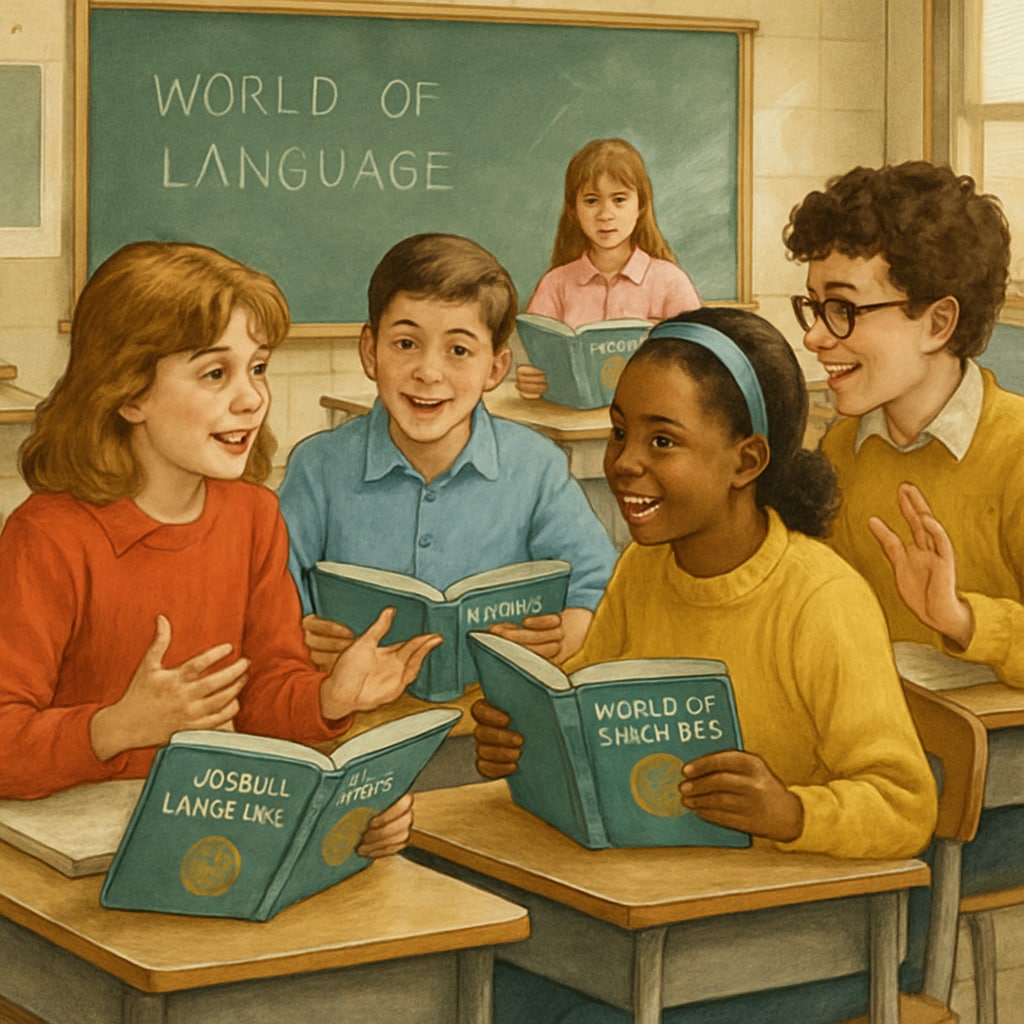The “World of Language” series, once a staple in American K12 education, remains a fascinating artifact in the history of language teaching. Renowned for its innovative approaches to reading science and oral communication, this forgotten gem offers valuable lessons for modern educators seeking effective methods to engage students in language learning. By revisiting this classic curriculum, we can uncover its enduring relevance in shaping contemporary teaching strategies.

The Legacy of “World of Language”
Developed during an era when educational resources prioritized both creativity and structure, “World of Language” provided a comprehensive framework for teaching grammar, vocabulary, reading comprehension, and oral communication. Unlike many modern textbooks that focus heavily on standardized testing preparation, this series emphasized real-world language application and critical thinking skills.
Key features of “World of Language” included:
- Interactive exercises that encouraged students to apply language skills in meaningful contexts.
- A balanced approach to grammar and creativity, fostering both technical accuracy and expressive fluency.
- Incorporation of storytelling and narrative-building to enhance reading comprehension and engagement.
For example, a typical chapter might include a short story followed by activities that prompted students to analyze character motivations, predict outcomes, and craft their own narratives. This approach seamlessly integrated reading science with practical exercises, aligning with contemporary research on the cognitive benefits of narrative-based learning.

Modern Relevance in Language Education
Despite its decline in popularity, the foundational principles behind “World of Language” remain highly relevant. Today’s educators often grapple with balancing traditional grammar instruction with engaging, student-centered activities. The series’ emphasis on oral communication and contextual learning offers a blueprint for addressing this challenge.
Consider the following ways in which “World of Language” principles can inform modern teaching practices:
- Integrating storytelling: Narrative exercises encourage deeper cognitive engagement and improve retention.
- Fostering oral communication: Role-playing and group discussions, staples of the series, can build confidence and fluency in students.
- Promoting critical thinking: Activities that require prediction and problem-solving enhance analytical skills alongside language proficiency.
Additionally, the global shift toward multilingualism makes the series’ focus on practical language use particularly relevant. As educators aim to prepare students for international communication, strategies that prioritize oral fluency and cultural context—both hallmarks of “World of Language”—are invaluable.
Why Rediscovering “World of Language” Matters
While modern curricula often rely on digital tools and standardized tests, the educational philosophies embodied in “World of Language” remind us of the importance of creativity, connection, and application in language learning. Its techniques align with contemporary research, such as findings by the reading science field on Britannica, which emphasize the role of storytelling in comprehension and memory.
Reintroducing “World of Language” concepts into classrooms could offer fresh perspectives on how to make language education more effective and engaging. For educators, researchers, and policymakers alike, this rediscovery represents an opportunity to blend timeless wisdom with modern innovation.
Conclusion: The “World of Language” series may no longer be widely used, but its principles endure. As we strive to improve language instruction in today’s classrooms, revisiting this educational treasure could unlock new possibilities for teaching reading science, oral communication, and fostering meaningful connections with language. After all, forgotten gems often hold the brightest insights.


